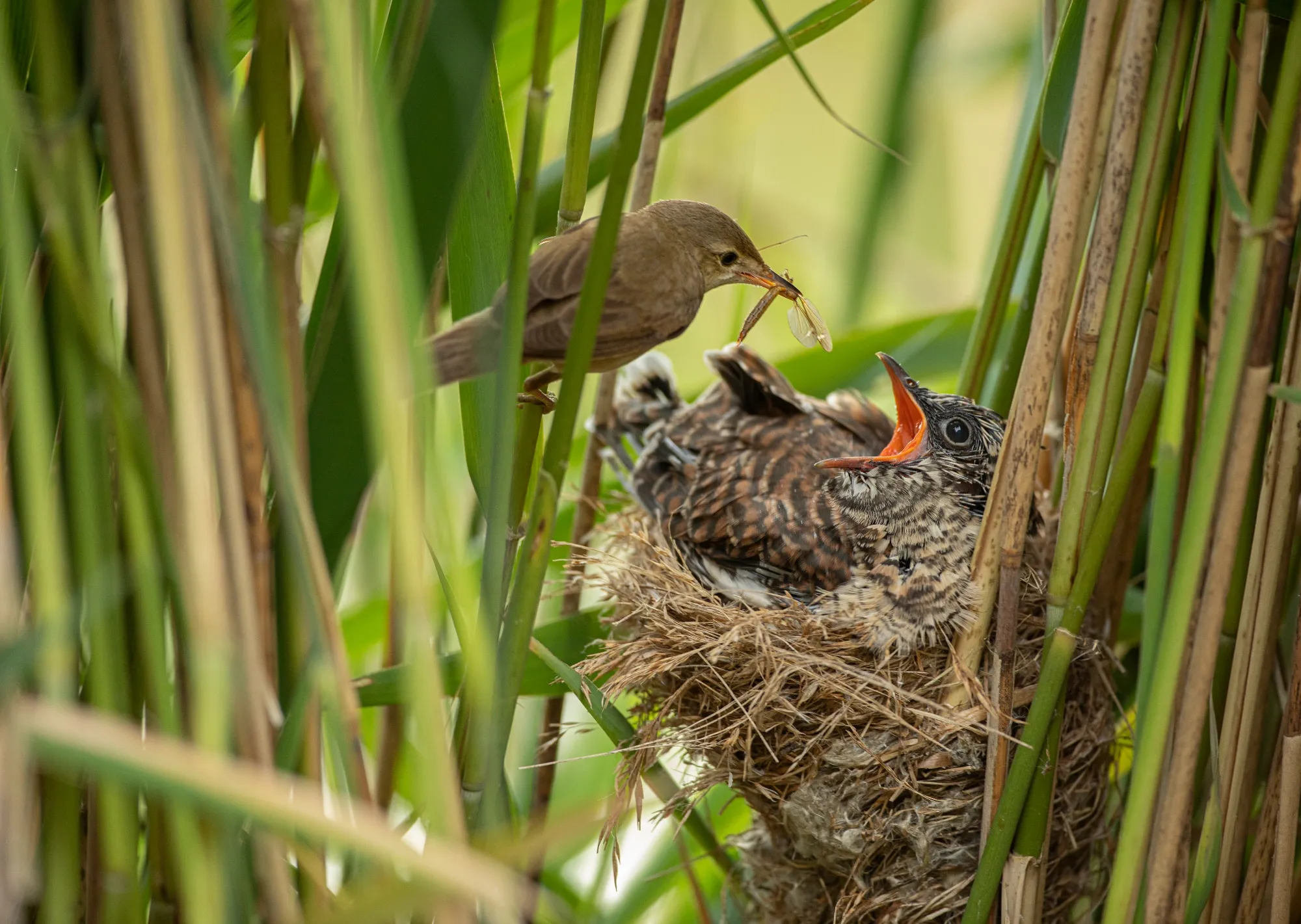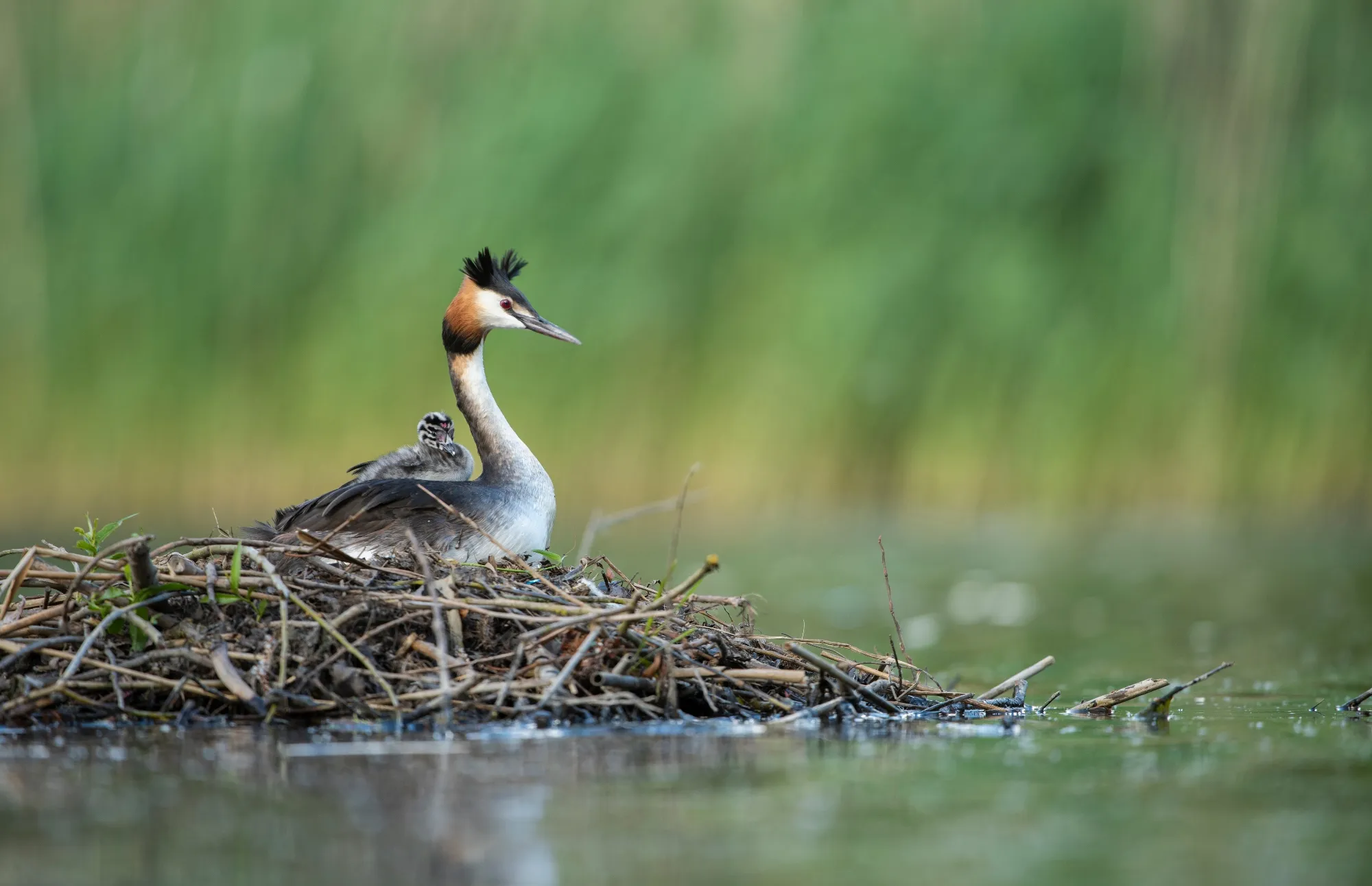News
Orkney’s wildlife is recovering as project's final phase is in sight
Threatened populations of Hen Harriers, Curlews and Orkney Voles are on the up since the launch of the Orkney Native Wil...
It’s spring, and bird breeding season is in full flow! Birds are parents and parented, just as we are – but often, their methods are very different to ours.

Do you know someone who’s reluctant to leave home? They’re like the albatross. Albatross chicks are in the nest for a whole year before they decide to leave, unlike Robin chicks, who fly the nest after just a month after they’ve hatched.
Albatross species tend to pair for life, return to the same breeding grounds year after year, but the secret to their long relationships could well be that for many months of the year, they don’t see each other at all.
Albatrosses also wait until they’re seven years old before they breed, so spend a long time being a teenager and soaring around the high seas.

That approach couldn’t be any more different to the one taken by Cuckoos. They’re known as brood parasites, laying their eggs in the nests of other birds species, who then raise the Cuckoo chick as their own. Some of the most common Cuckoo foster parents are Dunnocks, Meadow Pipits and Reed Warblers. Interestingly, studies have shown that they’re often loyal to their foster species, laying their eggs in the same kind of nest that they hatched in.
The chick hatches after approximately 10 days, and then it pushes any other eggs or chicks out of its nest. The adoptive parents will continue to feed the young Cuckoo, even though, at this point, it’s probably two or three times their size.
And whilst it’s often the female adoptive parent that looks after the Cuckoo chick, it’s not always the case that the female birds take on the largest share of the parenting. Female Dotterels lay the eggs, but then the males take over to incubate and raise their young. At this point, the females move on, and may well mate with other males in order to continue the survival of the species. Also, female Dotterels are brighter and more colourful than the males, and only return to the nest if they need to defend it from predators.

In contrast, Great Crested Grebes divide up the parenting role. They make a floating nest, which usually contains two eggs, and incubate in shifts of around two hours at a time. Unlike some bird species, grebe chicks can swim and dive almost from the point they hatch, but the adult birds carry them on their backs until they’ve been taught how to dive and fish, which lasts for around three weeks.
Great Crested Grebes are clearly ensuring that their chicks have the best start in life, and are able to hunt food for themselves before they’re ready to go it alone. But other birds take a more dramatic approach. Guillemots take a much bigger leap of faith. Whilst some chicks of other species wait until they can fly before leaving the nest, Guillemot chicks don’t do this. Guillemots lay a single egg on high cliffs, which both parents incubate under their feet. Just three weeks after hatching, the chicks move to the edge of the cliff, spread their not-quite developed wings and take a ‘leap of faith’ towards the sea below. That’s why they’re known as ‘jumplings’. From here, the male takes over, leading the chick out to the open sea where it can then grow flight feathers and become truly independent.

If you’ve enjoyed reading these facts about bird behaviour, then you’ll love the Natural History Museum’s new exhibition called Birds: Brilliant and Bizarre, in affiliation with the RSPB. This new exhibition explores birds’ incredible story throughout history – from surviving the mass extinction event that wiped out the dinosaurs, to how they diversified into a staggering 11,000 distinct species. As an added bonus, RSPB members get 20% off tickets to the exhibition.